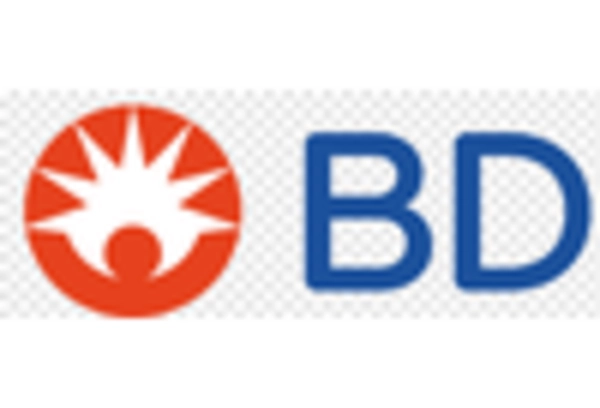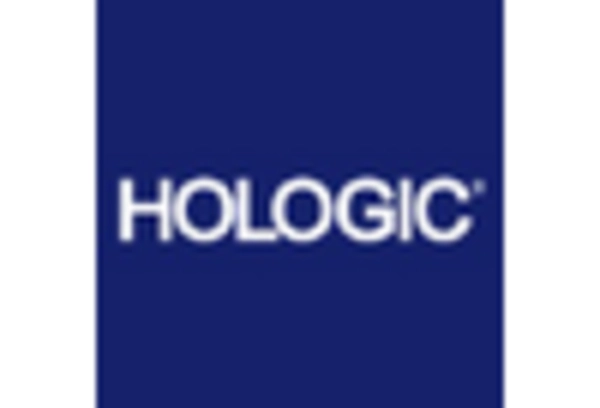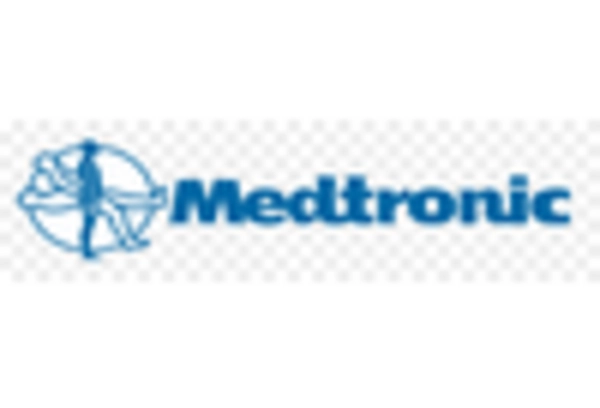Increased Healthcare Expenditure
The rising healthcare expenditure in South Korea is a significant factor propelling the bone biopsy market. With the government and private sectors investing more in healthcare infrastructure, there is a growing availability of advanced diagnostic tools and procedures. Reports indicate that healthcare spending in South Korea has increased by approximately 7% annually, reflecting a commitment to improving patient care. This financial support enables hospitals and clinics to acquire state-of-the-art equipment for bone biopsies, thus enhancing the overall quality of care. As healthcare budgets expand, the bone biopsy market is poised for growth, driven by the demand for more accurate and efficient diagnostic solutions.
Supportive Regulatory Environment
The regulatory landscape in South Korea is becoming increasingly supportive of innovations in the bone biopsy market. Government initiatives aimed at streamlining the approval process for new medical devices and procedures are fostering an environment conducive to market growth. Recent policy changes have reduced the time required for regulatory approvals, allowing for quicker access to advanced biopsy technologies. This supportive framework is likely to encourage investment in research and development within the bone biopsy market. As a result, manufacturers may introduce novel products that enhance diagnostic capabilities, thereby expanding the market. The proactive stance of regulatory bodies indicates a commitment to improving healthcare outcomes, which could further stimulate demand for bone biopsy procedures.
Advancements in Imaging Techniques
Innovations in imaging technologies are significantly influencing the bone biopsy market. Enhanced imaging modalities, such as MRI and CT scans, allow for more precise localization of lesions, improving the accuracy of biopsies. These advancements facilitate minimally invasive procedures, which are increasingly preferred by both patients and healthcare providers. The integration of advanced imaging techniques into the biopsy process is likely to enhance diagnostic outcomes, thereby driving market growth. In South Korea, the adoption of these technologies is on the rise, with a reported increase of 15% in imaging equipment investments over the past year. This trend suggests that the bone biopsy market will continue to benefit from technological improvements that enhance procedural efficacy and patient safety.
Rising Incidence of Bone Disorders
The increasing prevalence of bone disorders in South Korea is a primary driver for the bone biopsy market. Conditions such as osteoporosis and bone tumors are becoming more common, leading to a heightened demand for diagnostic procedures. According to recent health statistics, approximately 30% of the population over 50 years old is affected by osteoporosis, necessitating effective diagnostic tools. This trend indicates a growing need for bone biopsies, as they provide critical information for treatment planning. The bone biopsy market is likely to expand as healthcare providers seek to address these rising incidences through advanced diagnostic techniques. Furthermore, the aging population in South Korea is expected to contribute to this trend, as older individuals are more susceptible to bone-related health issues.
Growing Awareness of Early Diagnosis
There is a notable increase in awareness regarding the importance of early diagnosis of bone-related diseases in South Korea. Educational campaigns and healthcare initiatives are emphasizing the need for timely interventions, which is likely to boost the demand for bone biopsies. As patients become more informed about their health, they are more inclined to seek diagnostic procedures that can lead to early detection of conditions such as cancer or osteoporosis. This shift in patient behavior is expected to positively impact the bone biopsy market, as healthcare providers adapt to meet the rising demand for early diagnostic services. The trend suggests a potential increase in the volume of biopsies performed, further driving market growth.

















Leave a Comment